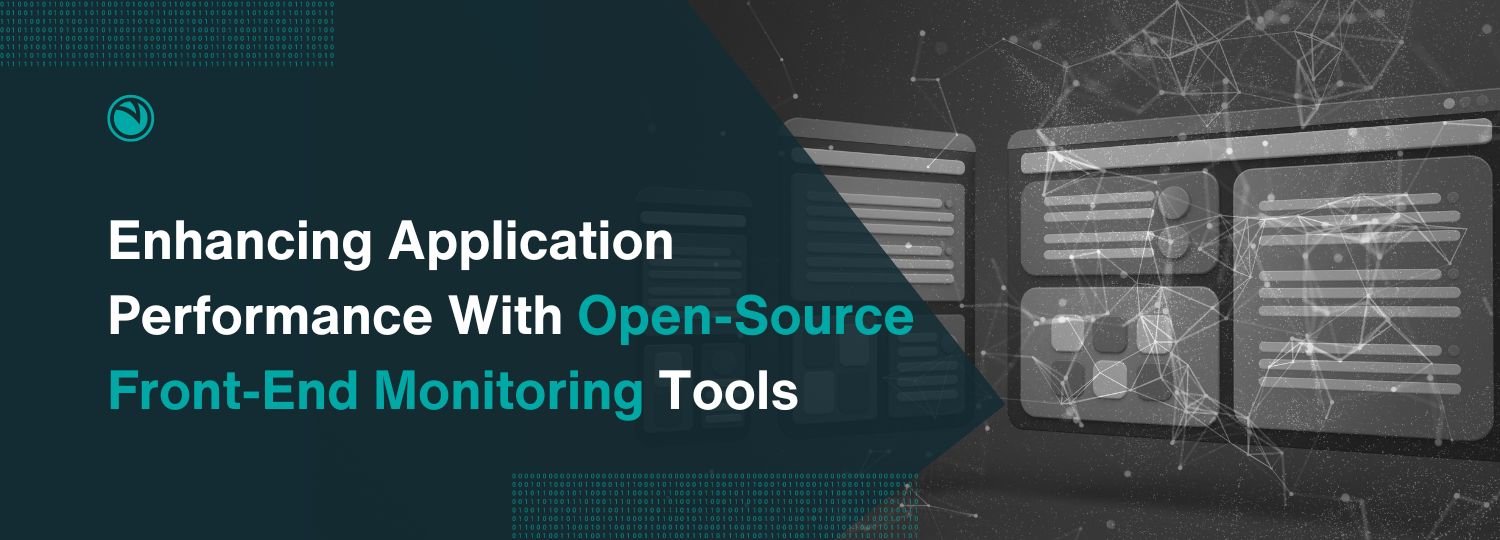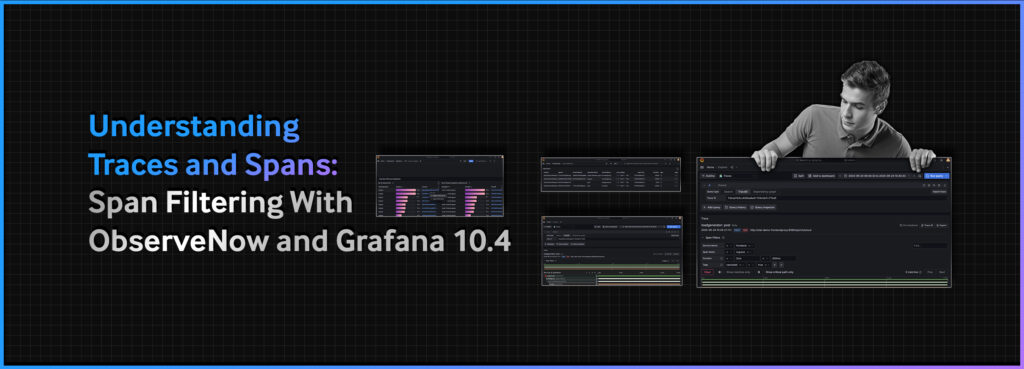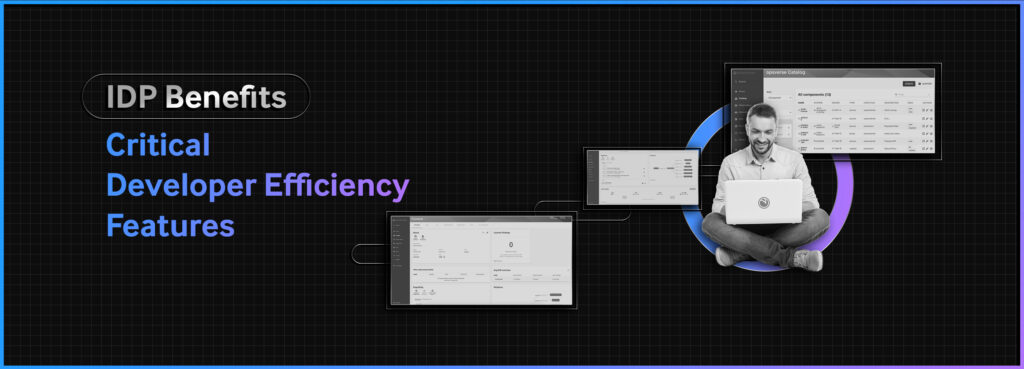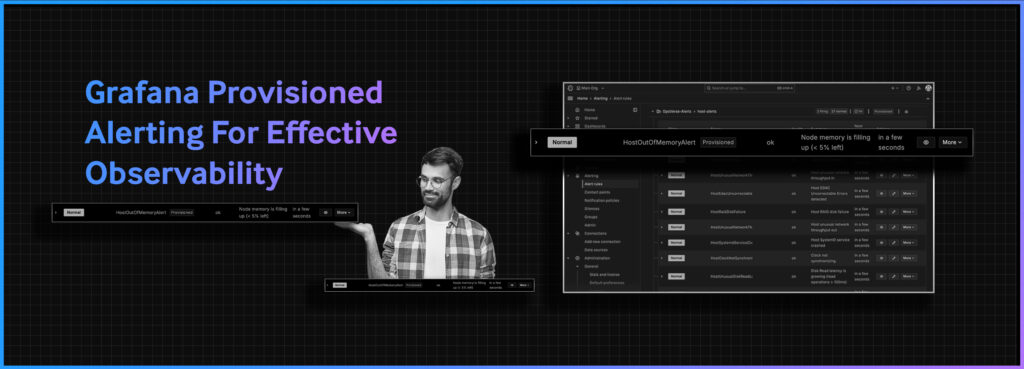In a digital era where user experience is often a critical component of business success, understanding the need for front-end monitoring is crucial. We’ve all experienced the frustration of a slow-loading website or glitchy interface – it’s the online equivalent of waiting in a long line at a grocery store. However, these seemingly minor hiccups can have a profound impact on a company’s bottom line.
Front-end monitoring helps uncover these common issues plaguing websites and applications. Today, open-source front-end monitoring tools play a pivotal role in identifying and resolving application performance issues. The transparency and flexibility offered by open-source solutions enable developers to customize and tailor monitoring requirements to specific application needs. They also allow for real-time tracking of key metrics, such as page load times, resource utilization, and error rates, facilitating a proactive approach to addressing performance issues. Let’s take a deep dive into the key features to look for in Open-Source Front-End Monitoring Tools, and the advantages of using these solutions.
Key Features To Look For in Open-Source Front-End Monitoring Tools
When considering open-source front-end monitoring tools, several key features can significantly enhance your ability to optimize web performance and ensure a seamless user experience.
Real-Time Performance Metrics
Look for tools that provide real-time monitoring of essential performance metrics. This includes insights into page load times, resource utilization, and network requests. Real-time data allows developers to quickly identify and address performance bottlenecks as they occur, ensuring a responsive and efficient user experience.
Seamless Instrumentation
Seamless instrumentation is a crucial aspect of any front-end monitoring tool. The ability to effortlessly enable monitoring through a simple process, such as including a two-line JavaScript snippet, ensures a user-friendly experience for developers and IT teams.
Also, this is particularly beneficial in fast-paced development environments where time is of the essence. Developers can seamlessly integrate a monitoring tool into their applications, allowing for quick identification and resolution of potential front-end performance issues.
Error Tracking and Logging
Effective monitoring tools should offer robust error tracking and logging solutions. Capturing and analyzing errors in real-time can provide valuable insights into issues affecting the user experience. Look for tools that not only detect errors but also provide detailed logs, stack traces, and context to expedite the debugging and resolution processes.
User Session Analysis
Understanding user behavior is necessary for optimizing front-end performance. Monitoring tools that offer user session analysis let developers to track user interactions, identify common paths, and gain insights into how users navigate through the application. This information is invaluable for making data-driven decisions to enhance user satisfaction.
Browser Compatibility Testing
In a diverse online landscape, ensuring a consistent experience across various browsers is paramount. Choose a monitoring tool that includes browser compatibility testing features. The latter enable developers to identify and address issues specific to different browsers, ensuring consistent and reliable performance across the entire user base.
Customizable Alerts and Notifications
Look for tools that allow you to customize alerts and notifications based on predefined thresholds or specific performance criteria. Customizable alerts ensure that development teams are promptly informed of critical issues, allowing for proactive intervention and swift resolution.
Advantages of Using Open-Source Front-End Monitoring Tools
Cost-Effectiveness
One of the most notable benefits of utilizing open-source front-end monitoring tools is their cost-effectiveness. Unlike proprietary solutions that often come with substantial licensing fees and ongoing subscription costs, open-source tools are freely available for download, use, and modification – making them an attractive option for organizations seeking to optimize their budgets.
Moreover, open-source tools often have robust communities that further contribute to their development, reducing the burden on individual organizations for maintenance and support costs.
Community Support and Collaboration
The expansive community support and collaboration surrounding these tools form another key advantage. With a vast pool of contributors and users, issues are addressed quickly and knowledge is shared openly, creating a dynamic and responsive ecosystem.
When a problem arises, communities often collaborate to provide timely solutions, updates, and patches. This shared responsibility results in quicker response times to emerging challenges, which in turn reduces downtime and enhances the overall reliability of the monitoring tools.
With a collaborative development model, open-source front-end monitoring tools benefit from continuous improvement. With worldwide contributors , these tools evolve organically, incorporating new features, optimizations, and integrations that reflect the evolving needs of their users.
Customization and Flexibility
The customization and flexibility inherent in open-source front-end monitoring tools are a significant advantage for development teams seeking tailored solutions to meet their specific needs.
Unlike rigid, one-size-fits-all proprietary alternatives, open-source tools give developers the freedom they need to modify and adapt the monitoring functionality to the unique requirements of their applications. This level of customization empowers teams to define key performance metrics, set up alerts based on specific criteria, and fine-tune monitoring parameters to align with their project’s goals.
Flexibility is another key aspect, allowing integration with a wide range of technologies, frameworks, and platforms. Open-source front-end monitoring tools can seamlessly adapt to diverse development environments, making them suitable for various projects and ensuring compatibility with evolving tech stacks.
Front-End Monitoring With OpsVerse’s ObserveNow
OpsVerse’s ObserveNow revolutionizes front-end application monitoring with its powerful web application observability capabilities. As described in detail in one of our previous blogs – Frontend Monitoring with OpsVerse ObserveNow – incorporating just a few lines of code enables developers to effortlessly instrument their frontend applications, granting them the flexibility to create more intricate observability use-cases.
The simplicity of this process underscores the profound impact it has on enhancing the visibility of application performance. Once the application is instrumented, a seamless integration occurs – all logs, metrics, and traces seamlessly become part of the same comprehensive stack as the backend code. This unified stack not only streamlines the monitoring process, but also ensures that the frontend and backend components are intricately connected, offering a holistic view of the entire system.Talk to our experts to learn more about how ObserveNow can help with front-end application monitoring, providing a unified approach to observing and analyzing the performance of entire applications.







